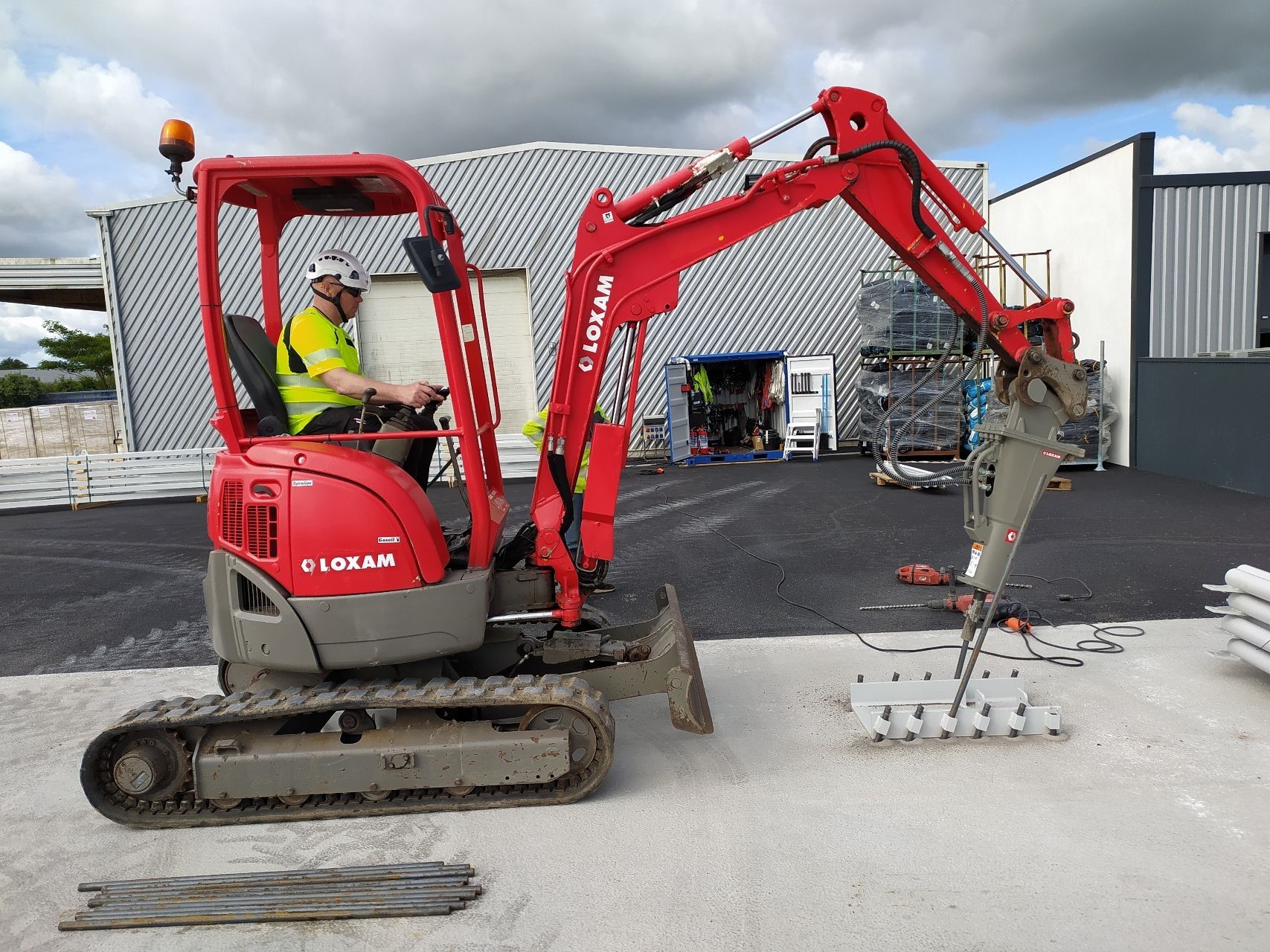14.08.2023
Listen to the blog
Every building needs a foundation. This article provides you with information about when a fabric structure can be anchored directly to asphalt and when you need a concrete foundation.
A Best-Hall fabric structure can be built on two different foundations: either directly on asphalt or on a concrete foundation. As a rule, asphalt can be used as the foundation for building a basic-sized fabric structure that tolerates unevenness, while more traditional materials always require a concrete foundation. “The intended purpose of the building also determines what kind of a foundation is built. For example, a portable tensile fabric covered warehouse building can be anchored with steel rods directly to asphalt. By contrast, stiffer building materials, such as sheet metal or sandwich panels, require a foundation, usually a concrete base onto which the building can be fastened with cast-in anchors and anchor bolts,” summarises Marketing and Sales Manager Pia Anttiroiko from Best-Hall. The size of the building is also a factor in foundation requirements. A building always requires a cast concrete foundation if its width exceeds 45–50 metres. Width and height determine how much weight and horizontal forces, for example, the base of the building must be able to withstand. By contrast, the length of the hall has no similar bearing.
“The building authorities of some municipalities require that fabric structures are erected onto a concrete foundation. This matter should be checked in the planning phase directly with the local authorities,” Anttiroiko points out.
Snow and wind loads are a factor in the foundation selection
The greater the snow or wind load that the fabric structure is subjected to, the more likely it is that the building needs a concrete foundation. However, the impacts of the local weather conditions are always assessed on a case-by-case basis. Furthermore, the base of the building always requires a soil inspection. Snow loads on the roof of the building increase its total weight and push its walls outwards from the bottom. By contrast, wind can both lift the building and push it in different directions. If the lifting force of wind is great enough, fastening to asphalt is not enough to keep the building in place. In such cases, a concrete foundation is needed.
“In Finland, snow and wind loads are rarely so great that they require casting a concrete foundation for a building less than 45–50 metres wide. Snow loads are a significant factor in countries such as Norway, while wind is a significant factor in France on the coast of the Atlantic. The gusts over there can be quite formidable,” Anttiroiko explains.
Will an old asphalt foundation do?
An old asphalt foundation can be used to build a fabric structure, provided that its thickness, its underside structure and any electrical cables, drainage ditches and sewer pipes under it are known. The reused asphalt must also be undamaged and in good condition.
“We do recommend renewing the asphalt. That will ensure that the foundation is strong enough for the entire long service life of the building. Best-Hall’s experts will be happy to help with any questions related to the building selection and its foundation, from the planning phase all the way to installation,” Anttiroiko comments.

Foundations required by Best-Hall fabric structures:
Best-Hall Basic:
The Best-Hall Basic fabric structure is anchored to asphalt. The Basic model has the fastest delivery time in our selection, and the building’s dimensions are such that it can also be installed onto old undamaged asphalt if needed.
Best-Hall Custom:
The Best-Hall Custom fabric structure can be anchored to an asphalt foundation if its width is less than 45–50 metres and no elements such as lifting devices are integrated into the frame. Custom can also be modified retroactively. For example, it can be lengthened or even relocated. Any modification and relocation work is easier to carry out on a building fastened to asphalt.
Best-Hall Kombi:
The Best-Hall Kombi building has walls made of steel or wood elements, so it requires a robust concrete foundation. The building’s more traditional look and concrete foundation make it possible for it to be granted a building permit in places where the local detailed plan requires fixed construction.
Read more on the subject:
Yhdystie 3-7,
68300 Kälviä, Finland
Tel: +358 6 832 5000
info@besthall.com
Business ID FI01070190